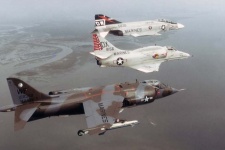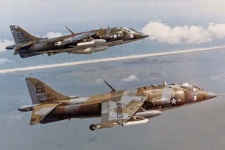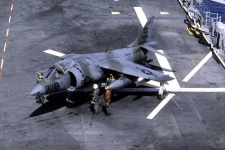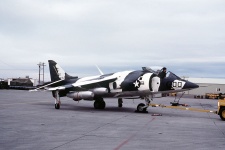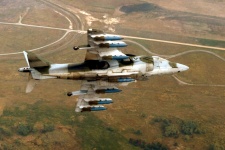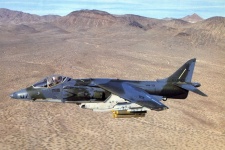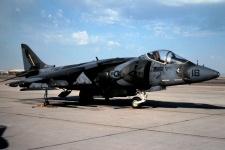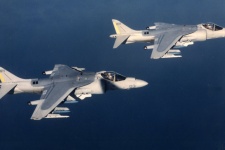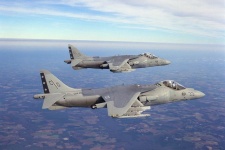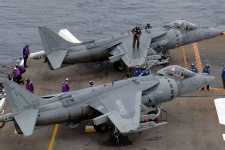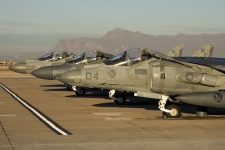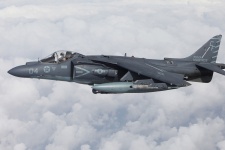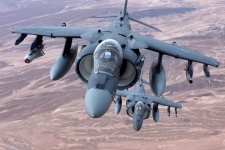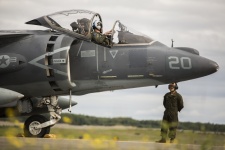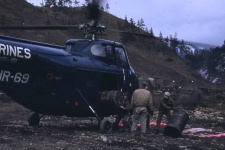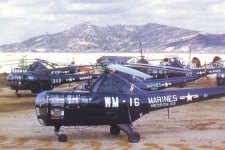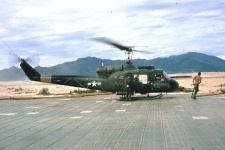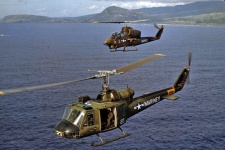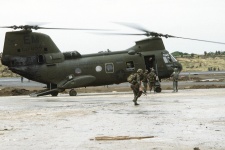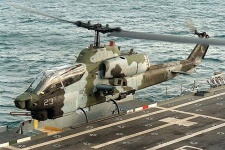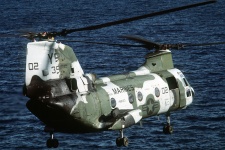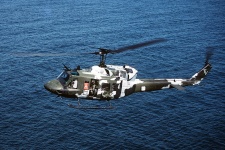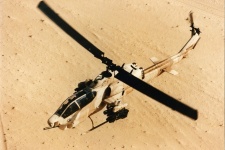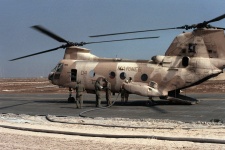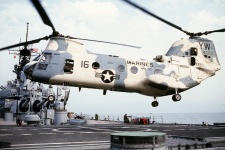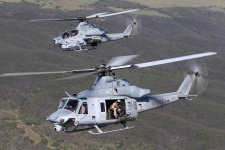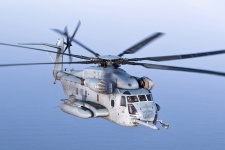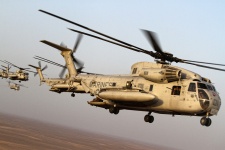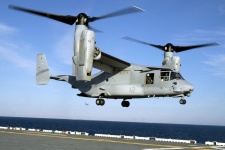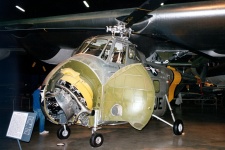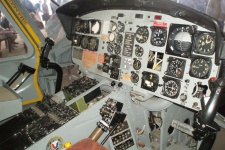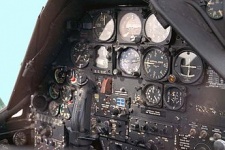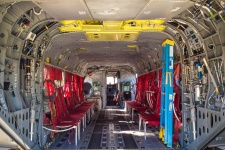Aircraft Colors and Camouflage, US Marine Corps
![]()
Introduction to US color standards
The first color standard in use by the US armed forces was known as Specification No. 3-1, introduced on 28 November 1919 and including a palette of 24 colors of which only one would still be in use during World War II. The earliest standard in use by the US Army Air Corps (USAAC) before the war was Specification 14057 which dated from April 1931 and had been revised numerous times since, the latest being Specification 14057-C on 27 December 1939. An updated eight-color (later nine-color) palette was introduced shortly thereafter, in Air Corps Bulletin No. 41 dated 16 September 1940 and this would include all the main colors in use when the US Army Air Force (USAAF) replaced the USAAC in June 1941. Camouflage schemes would later be specified in the Technical Order No. 07-1-1 although in many cases these were applied in an ad hoc manner by commanders in the field. The US Navy (USN) had its own color system during the early years of World War II based around Bureau of Aeronautics (BuAer) Specification M-485 from 6 December 1940 which listed 6 (later 7) basic non-spectacular (matt) colors.
The need to unify color codes for the USAAF and USN (which used completely different camouflage schemes) resulted in the Army and Navy Aircraft (ANA) system, introduced on 28 September 1943. ANA Bulletin No. 157 included an initial palette of 19 mostly matt (plus a few semi-gloss) colors using a three-digit numbering system in the 600s. ANA Bulletin No. 166 added a further 15 gloss colors numbered in the 500s. A number of additional colors were later added for a total of 44. Notably, a few of these were gloss colors but were added to the 600s range. The ANA system also included numerous substitute colors for British colors, necessary in light of the large number of US aircraft provided to the Royal Air Force and Fleet Air Arm through Lend-Lease.
On 12 January 1950, the US published Federal Specification TT-C-595 which superseded the ANA system with a four-digit numbering system. This was short-lived and just a few years later was superseded by the Federal Standard system, formally known as FED-STD-595. Each color the palette is identified by a five-digit code. The first digit refers to the sheen of the paint, these being gloss (1), semi-gloss (2), and matt (3). The second digit refers to the color, these being brown (1), red (2), yellow (3), green (4), blue (5), gray (6), all others including whites, blacks, and metallics (7), and fluorescents (8). The last three digits are unique for each color and typically go from darker to lighter. The initial palette included 358 colors although some colors only officially exist in one or two out of the three sheens. Although the hues are identical regardless of sheen, there have been some notorious exceptions such as Olive Drab whose semi-gloss version used by the US Army on tanks (FS 24087) was different from the matt version used on helicopters (FS 34087), this being an error that took decades to correct.
The Federal Standard system has gone through numerous revisions, starting with FED-STD-595A in January 1968 (437 colors), FED-STD-595B in January 1994 (611 colors), and FED-STD-595C in January 2008 (650 colors). The ANA Bulletin 157/166 continued to be updated post-war as well, until 15 October 1964 when it was discontinued in favor of FED-STD-595. On February 17th, 2017, the Federal Standard system was replaced by the Aerospace Material Specification Standard 595, or AMS-STD-595. It is largely equivalent to the Federal Standard system and most existing colors have been carried over with identical numbers.
Contents:
- Aircraft
- Helicopters
- Other
External Links:
- Army-Navy Aeronautical (ANA) Color Comparison w/Equivalents Table
- Urban's Colour Reference Charts, United States
- Federal Specification TT-C-595
- The History of Federal Standard 595
- Federal Standard 595C Range Colour Chart
- AMS Standard 595A Range Colour Chart
- AMS Standard 595 Color
References:
- Elliot, John M., The Official Monogram US Navy & Marine Corps Aircraft Color Guide Vol 2 1940-1949, Monogram Aviation Publications (1989)
- Elliot, John M., The Official Monogram US Navy & Marine Corps Aircraft Color Guide Vol 3 1950-1959, Monogram Aviation Publications (1989)
- Elliot, John M., The Official Monogram US Navy & Marine Corps Aircraft Color Guide Vol 4 1960-1993, Monogram Aviation Publications (1989)
Paint guide basics:
All colors in this page include a paint chart with matches or equivalences from 19 different model paint ranges. Paints are considered matches if they are labeled with the intended color (either uniquely on together with another color). Paints are considered equivalences if they are close to the intended color but not labeled as such. The accuracy of any paint is independent of whether it is a match or an equivalence and these are described in the text (there can be poor matches and highly accurate equivalences). The following nomenclature is used in the paint tables and is based on matches or equivalences to US Insignia Red FS 11136:
| Paint | Match or equivalence type (label) |
| MP01 | Labeled to match one specific color (FS 11136) |
| MP02* | Labeled to match more than one color of same-country standards (FS 11136 / ANA 509)* |
| MP03** | Labeled to match more than one color of different-country standards (FS 11136 / BS 538) |
| MP04 (!) | Questionable accuracy of label match (doesn't look like FS 11136) |
| MP05 (?) | Questionable accuracy of label match, untested (doesn't look like FS 11136 in the bottle) |
| (MP06) | Close equivalent to FS 11136 (BS 538) |
| (MP07) (?) | Questionable equivalent to FS 11136 (Generic Gloss Red) |
* A single asterisk also denotes implicit matches for same-country standards where there is an official succession between standards. For example, H327* would match ANA 509 even if the label only references FS 11136 since ANA 509 is its official predecessor. This does not apply when there are considerable differences between successive paints (ex: Olive Drab No. 41/ANA 613/FS 34087) and this will be described in the text. By and large, however, single asterisk matches should be considered close enough to unique matches as to not be seriously questioned.
The paint charts make no distinction between gloss, semi-gloss, and matt variants of a color if the correct sheen is unavailable (ex: gloss FS 11136 will be a specific match for matt FS 31136 if the latter does not exist in the same paint range). Exceptions are made where there is a known or suspected color difference (ex: FS 24087 and 34087).
![]()
AIRCRAFT
RAF Harrier scheme (1971)
The USMC was quick to adopt the British-developed Harrier S/VTOL aircraft where it was known as the AV-8A and entered service in 1971. The AV-8A was virtually identical to the RAF's Harrier GR.1 and all original deliveries were made in the existing RAF Harrier scheme. This consisted on a topside camouflage of Dark Green BS 241 and Dark Sea Grey BS 638 along with an underside color of Light Aircraft Grey BS 627. It is unclear which colors would be used on subsequent repaints. It is likely that most were repainted in the colors that would later be used in the Land Camouflage Scheme (see below). However, it has also been suggested that other approximations of the RAF colors or other experimental colors may have been used. In the late 1970s, most Harriers began transitioning into lo-viz markings which would have necessitated a repaint, meaning that by the turn of the decade it is likely that all Harriers were in FS colors.
It was common for both USMC and RAF Harriers to wear a temporary, washable white distemper over the Dark Green while on Arctic training missions. This lasted throughout the time the Land Camouflage Scheme was in use as well.
Paint guide: All of these paints are adequately represented (see USAF and USN pages) and should not present a problem.
| BS 627 | BS 241 | BS 638 | |
| Light Aircraft Grey | Dark Green | Dark Sea Grey | |
| Schemes | |||
| Basic | Lower | Upper Camo | Upper Camo |
| Color matches | |||
| Gunze Aqueous | H332 | H330 | H331 |
| Gunze Mr. Color | C332 | C330 | C331 |
| Humbrol | 166 | 163 | 164 |
| Model Master | - | 2060* | 2059 |
| Revell | - | - | - |
| Tamiya | - | XF-81* | XF-54 |
| Vallejo Model Air | - | 71.324 | - |
| Vallejo Model Color | - | - | 70.991** |
| AKAN | 70014 | 70020 | 70017 |
| AK Interactive | - | AK 2011* | - |
| AK Real Colors | RC298 | RC286* | RC296 |
| AMMO by Mig | - | A.MIG-915 | - |
| Colourcoats | ACRN20 | ACRN09 | ACRN03 |
| Hataka | HTK-217 | HTK-143 | HTK-140 |
| Lifecolor | - | - | UA 108** |
| Mission Models | - | MMP-977* | - |
| Mr. Paint | MRP-374 | MRP-110* | MRP-113 |
| Xtracolor | X015 | X001 | X004 |
| Xtracrylix | XA1015 | XA1001 | XA1004 |
Harrier Land Camouflage Scheme (1985-1993)
The Land Camouflage Scheme was introduced for USMC aircraft and helicopters from 18 April 1985 (MIL-STD-2161(AS)). Given that USMC Harriers were already painted in a three-tone disruptive pattern based on their RAF counterparts, the switch to the LCS only involved a different set of colors which were noticeably darker than their predecessors. These were Extra Dark Green FS 34064 and Dark Blue Grey FS 36099 for the topside while Light Gull Gray FS 36440 was used for the undersides. The introduction of the LCS also coincided with the entry into service of the AV-8B Harrier II which is best known for wearing this scheme throughout the 1980s. Later in the decade, the LCS gradually transformed into a two-tone wraparound scheme involving only the topside colors.
Paint guide:
- Extra Dark Green FS 34064: Not very well represented, but more so than its gray LCS counterpart with AK Real Colors, Hataka, and Lifecolor all offering it (plus AKAN but only in its lacquer range). It is a very dark green that can be replicated by darkening the more widely available FS 34079.
- Dark Blue Gray FS 36099: This is a very rare color, being even more poorly represented than its green LCS counterpart. Hataka is the only range to carry it as a unique match. Fortunately, it closely resembles German RLM 74 and is also matched as such by Model Master and Vallejo.
| FS 36440 | FS 34064 | FS 36099 | |
| Light Gull Gray | Extra Dark Green | Dark Blue Gray | |
| Schemes | |||
| LCS | Lower | Upper Camo | Upper Camo |
| LCS (Wrap) | Wrap Camo | Wrap Camo | |
| Color matches | |||
| Gunze Aqueous | H325 | - | - |
| Gunze Mr. Color | C325 | - | - |
| Humbrol | 129 | - | - |
| Model Master | 1730 | - | 2084** |
| Revell | - | - | - |
| Tamiya | (X-20) | - | - |
| Vallejo Model Air | 71.121* | 71.019** | 71.110** |
| Vallejo Model Color | 70.986* | 70.979** | 70.867** |
| AKAN | 72014 | 62046 | 62052 |
| AK Interactive | AK 2051 | - | - |
| AK Real Colors | RC220 | RC342 | - |
| AMMO by Mig | A.MIG-241 | - | - |
| Colourcoats | ACUS01 | - | ACUS46 |
| Hataka | HTK-048* | HTK-232 | HTK-235 |
| Lifecolor | UA 025 | UA 119 | - |
| Mission Models | MMP-063 | - | - |
| Mr. Paint | MRP-98 | - | - |
| Xtracolor | X137 | - | - |
| Xtracrylix | XA1137 | - | - |
Gulf War Harriers (1991)
USMC Harriers were originally deployed to the Gulf (Operation Desert Shield) in Land Camouflage Scheme but were hastily repainted before combat operations began. The new schemes retained the two-tone LCS wraparound pattern but with improvised colors that varied across squadrons (and even between aircraft in each squadron). Perhaps the best known is that of VMA-231 ('Ace of Spades') which used colors similar to Light Gray 36495 and Blue FS 35190. Meanwhile, VMA-311, VMA-513, and VMA-542 sported darker colors, which may have been intended to match Dark Gull Gray FS 36231 and Medium Gunship Gray FS 36118. There was much greater contrast in the Harriers of VMA-331 ('Bumblebees'), which are suggestive of FS 36495 and FS 36118. A small number of one-off schemes were used during the Gulf War, such as one aircraft from VMA-542 sporting an overall gray (possibly FS 36320) and a replacement aircraft from that same squadron seen in an early version of the Tactical Paint Scheme (see below).
Paint guide: Note that it is believed that all these paints were mixed in theater and are only approximations of the colors below.
- Blue FS 35190: This is not a widely available color but is found in a few in a few of the newer ranges given that it is used in some USN Aggressor schemes.
- Others: These are described in the Tactical Paint Scheme section below.
Links:
| FS 36495 (?) | FS 35190 (?) | FS 36231 (?) | FS 36118 (?) | |
| Light Gray | Blue | Dark Gull Gray | Medium Gunship Gray | |
| Schemes | ||||
| VMA-231 | Wrap Camo | Wrap Camo | ||
| VMA-331 | Wrap Camo | Wrap Camo | ||
| Others | Wrap Camo | Wrap Camo | ||
| Color matches | ||||
| Gunze Aqueous | H338 | - | H317 | H305 (!) |
| Gunze Mr. Color | C338 | - | C317 | C305 (!) |
| Humbrol | 147 | - | 140 | 125 |
| Model Master | 1732 | - | 1740 | 1723 |
| Revell | - | - | - | 74 |
| Tamiya | - | - | (XF-54) | (XF-24) |
| Vallejo Model Air | 71.276 | - | 71.277* | 71.097* |
| Vallejo Model Color | - | 70.901 | 70.991 | 70.868* |
| AKAN | - | 72076 | 72064* / 62009 | 72040* |
| AK Interactive | - | - | - | AK 2144 |
| AK Real Colors | RC253 | RC236 | RC247 | RC244 |
| AMMO by Mig | A.MIG-209 | - | A.MIG-205 | A.MIG-204 |
| Colourcoats | - | - | ACUS02 | ACUS14 |
| Hataka | HTK-050 | - | HTK-044* | HTK-031 |
| Lifecolor | UA 023 | - | UA 033 | UA 022 |
| Mission Models | MMP-116 | - | MMP-064 | MMP-084 |
| Mr. Paint | MRP-364 | MRP-239 | MRP-100 | MRP-40 |
| Xtracolor | X139 | X160 | X131 | X130 |
| Xtracrylix | XA1139 | - | XA1131 | XA1130 |
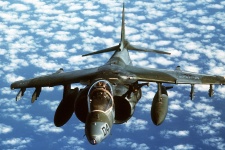 |
USMC Harriers were initially deployed in their wrap-around LCS colors, like this aircraft from VMA-513 during Operation Desert Shield. |
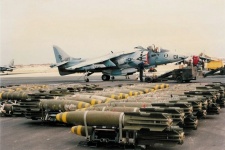 |
This aircraft from VMA-231 shows the more well known lighter colors that approximate FS 36495/FS 35190. |
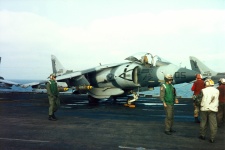 |
This aircraft from VMA-331 had darker colors, the blue being closer to FS 36118. In reality none of these colors had direct FS matches. |
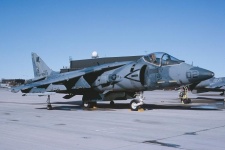 |
The other Harrier squadrons wore a darker, lower contrast two-tone suggestive of FS 36231/FS 36118. (Photo credit: dstorm.eu) |
Harrier Tactical Paint Scheme (1992-2014)
By the time of the Gulf War, a Harrier Tactical Paint Scheme (HTPS) had been developed and most USMC Harriers gradually converted in the early 1990s, notwithstanding the fact that the updated MIL-C-2161A(AS) from 1 May 1993 continued to show the Land Camouflage Scheme as standard. Initially, the HTPS consisted of a topside color of Medium Gunship Gray FS 36118 which would cover most of the wings, curving around the edges, as well as the upper fuselage from behind the canopy up until the fin. Sides were painted Dark Ghost Gray FS 36320, while the undersides were painted Light Ghost Gray FS 36375. This initial version of the HTPS did not last long, however, possibly because of the excessive contrast between the topside color and the two ghost grays. As such, the HTPS was modified into what would be its most well-known incarnation. Although the topside FS 36118 was retained, the sides were now darkened with Dark Gull Gray FS 36231, leaving the undersides in FS 36320. Perhaps as a result of operating over water, FS 36118 tended to fade more on Harriers than on F-16s and also tended to lose its blueish tint. As such, contrast between the colors was much more subdued.
Paint guide:
- Light Ghost Gray FS 36375 / Dark Ghost Gray FS 36320: These two colors are so often paired on modern USN/USAF aircraft that they must be inevitably described together as getting any of them wrong risks ruining the subtle demarcation that is needed to make them look right as well as their distinctive blue gray hues. Some paints come off as having too much of a purplish hue, and these include Gunze for FS 36375, AK Real Air for FS 36320, and Mission Models for both. In contrast, the Xtracolor/Xtracrylix and Model Master versions of FS 36375 appear too neutral. Lifecolor gets the hue right though the contrast between the two seems minimal. However, AKAN and Hataka have far too pronounced contrasts particularly the latter whose FS 36320 is excessively dark (AKAN at least nailed the hues). None of the other water-based acrylics (AK Air, AMMO, and Vallejo) appears to have gotten either color even remotely close either. It appears that Mr. Paint (unsurprisingly given their well deserved reputation for accuracy) got both the hue and the contrast spot on, with either Gunze or AK Real Air as still slightly distant seconds.
- Dark Gull Gray FS 36231: This is widely available and should not present much problem, with most ranges matching the post-war version rather than the wartime ANA 621 that preceded it although the differences between the two are negligible. Tamiya's XF-54 is a very close equivalent as well. AKAN only has the post-war version it in its lacquer range, although ANA 621 is available in acrylic.
- Medium Gunship Gray FS 36118: Almost universally available with some versions slightly more blue than others but this is evident in photos as well. I find Gunze H305 to be highly inaccurate for FS 36118 (too light and lacks the blue-gray tint). However, given the more pronounced fading of this color on HTPS Harriers, it might be more appropriate here. For unfaded versions, Tamiya's XF-24 is spot on for FS 36118 despite not being labeled as such. All other versions of FS 36118 that I have encountered (Vallejo, AK Real Color) appear close to the real thing.
| FS 36375 | FS 36320 | FS 36231 | FS 36118 | |
| Light Ghost Gray | Dark Ghost Gray | Dark Gull Gray | Medium Gunship Gray | |
| Schemes | ||||
| HTPS (1) | Lower | Sides | Upper | |
| HTPS (2) | Lower | Sides | Upper | |
| Color matches | ||||
| Gunze Aqueous | H308 | H307 | H317 | H305 (!) |
| Gunze Mr. Color | C308 | C307 | C317 | C305 (!) |
| Humbrol | 127 | 128 | 140 | 125 |
| Model Master | 1728 | 1741 | 1740 | 1723 |
| Revell | - | - | - | 74 |
| Tamiya | - | - | (XF-54) | (XF-24) |
| Vallejo Model Air | - | 71.120 | 71.277* | 71.097* |
| Vallejo Model Color | 70.615 | - | 70.991 | 70.868* |
| AKAN | 72032 | 72030 | 72064* / 62009 | 72040* |
| AK Interactive | AK 2057 | AK 2058 | - | AK 2144 |
| AK Real Colors | RC252 | RC251 | RC247 | RC244 |
| AMMO by Mig | A.MIG-203 | A.MIG-208 | A.MIG-205 | A.MIG-204 |
| Colourcoats | ACUS03 | ACUS40 | ACUS02 | ACUS14 |
| Hataka | HTK-037 | HTK-035 | HTK-044* | HTK-031 |
| Lifecolor | UA 026 | UA 027 | UA 033 | UA 022 |
| Mission Models | MMP-073 | MMP-074 | MMP-064 | MMP-084 |
| Mr. Paint | MRP-38 | MRP-97 | MRP-100 | MRP-40 |
| Xtracolor | X136 | X135 | X131 | X130 |
| Xtracrylix | XA1136 | XA1135 | XA1131 | XA1130 |
Harrier Tactical Paint Scheme (2014-Current)
A new Harrier Tactical Paint Scheme (colloquially known as the 'Dark Harrier Scheme') was specified on 7 September 2014 (MIL-C-2161C(AS)) although it was introduced operationally much earlier, from around 2010. The new HTPS was a darker two-tone scheme consisting of Medium Gunship Gray FS 36118 covering the upper fuselage and sides over Blue Gray FS 35237 undersides. This scheme was pioneered on radar-equipped Harrier Plus aircraft, non-radar aircraft still retained the earlier HTPS three-tone although gradually the latter have also been painted in this scheme. In recent years, aircraft with Dark Ghost Gray FS 36320 undersides have begun appearing which is likely to be the new standard for this scheme.
Paint guide:
- Blue Gray FS 35237: This is the less problematic color among the three main TPS colors, since contrasts tend to be more noticeable even on real aircraft and so there is more leeway for slight errors in lightness. Still, the Xtracolor/Xtracrylix, AKAN, and AMMO by Mig versions appear too dark, while Gunze seems to lack the necessary amount of blue although it still harmonizes well with its FS 36320. Once again, Mr. Paint takes the crown (AK Real Air coming close) and for those wanting the full TPS palette from the same range, it is the preferred choice.
| FS 35237 | FS 36118 | |
| Blue Gray | Medium Gunship Gray | |
| Schemes | ||
| HTPS (2014) | Lower | Upper |
| Color matches | ||
| Gunze Aqueous | H338 | H305 (!) |
| Gunze Mr. Color | C338 | C305 (!) |
| Humbrol | 147 | 125 |
| Model Master | 1732 | 1723 |
| Revell | - | 74 |
| Tamiya | - | (XF-24) |
| Vallejo Model Air | 71.276 | 71.097* |
| Vallejo Model Color | - | 70.868* |
| AKAN | 72043 | 72040* |
| AK Interactive | - | AK 2144 |
| AK Real Colors | RC253 | RC244 |
| AMMO by Mig | A.MIG-209 | A.MIG-204 |
| Colourcoats | ACUS38 | ACUS14 |
| Hataka | HTK-050 | HTK-031 |
| Lifecolor | UA 023 | UA 022 |
| Mission Models | MMP-116 | MMP-084 |
| Mr. Paint | MRP-364 | MRP-40 |
| Xtracolor | X139 | X130 |
| Xtracrylix | XA1139 | XA1130 |
![]()
HELICOPTERS
Post-war / Korean War (1947-1955)
From 2 January 1947 (BuAer Specification SR-2f), the use of Glossy Sea Blue ANA 623 would spread to nearly all major combat types including helicopters the latter which were becoming increasingly important components of naval operations for both the USN and the USMC. around 1947/48 the pigment composition of GSB was altered in order to produce a color that would be less prone to fading and losing its glossy sheen. This new version of ANA 623 also ended up being slightly lighter and more saturated than its wartime predecessor, and does not match FS 15042 or any other Federal Standard color for that matter. This would be the last instance in which major USMC helicopters would use the same scheme as the USN.
Paint guide:
- Glossy Sea Blue ANA 623 (2): No paint company currently makes a postwar-specific ANA 623. Most modeling paints attempt to match FS 15042 which is closer to the darker wartime shade and would not look appropriate when compared with photos of USN/USMC aircraft from around the time of the Korean War. Only Colourcoats makes a specific post-war version, although it is matched to FS 15042 which would seem incorrect. Tamiya XF-17, a poor match for the wartime shades, looks like a better post-war fit while Xtracolor/Xtracrylix (X121/XA1121) appear closer to the post-war version as well. Given that the difference between ANA 607 and 623 is not as great as many paint manufacturers think, a workaround is to use ANA 607 if it is separately available and is lighter and more saturated. For example, Gunze's H56/C14 seems to fit this description. The paint table includes ANA 607 matches and equivalents with the caveat that they have not been adequately compared.
| ANA 623 (2) | |
| Glossy Sea Blue | |
| Schemes | |
| Basic | Overall |
| Color matches | |
| Gunze Aqueous | (H54) (?) |
| Gunze Mr. Color | (C14) (?) |
| Humbrol | (181) (?) |
| Model Master | (1718) (?) |
| Revell | - |
| Tamiya | (XF-17) (?) |
| Vallejo Model Air | (71.295) (?) |
| Vallejo Model Color | (70.898) (?) |
| AKAN | (72042) (?) |
| AK Interactive | (AK 2233) (?) |
| AK Real Colors | (RC257) (?) |
| AMMO by Mig | (A.MIG-227) (?) |
| Colourcoats | ACUS35 |
| Hataka | (HTK-_006) (?) |
| Lifecolor | (UA 044) (?) |
| Mission Models | (MMP-062) (?) |
| Mr. Paint | (MRP-237) (?) |
| Xtracolor | (X121) |
| Xtracrylix | (XA1121) |
Cold War / Vietnam War (1955-1985)
From the early 1950s it became obvious that Glossy Sea Blue was inappropriate color for low-flying helicopters in combat areas. From 16 February 1955 (BuAer Instruction NAVAER 07.2), it was determined to switch all helicopters to Light Gull Gray (FS 36440). However, this lasted barely over a year. From 16 July 1956 (MIL-C-18263(Aer)), it was decided to paint USMC helicopters in a so-called Land Camouflage Scheme consisting of Field Green FS 34097 overall. No major changes to the scheme were made for a decade and a half until on 9 March 1972 (an amendment to MIL-C-18263F(Aer)) it was decided to switch to a gloss version of the existing color, Field Green FS 14097. These colors were the main ones used on all USMC helicopters during the Vietnam War. However, it has also been documented that some helicopters originally intended for Army use but which were diverted to the USMC during the war remained in Olive Drab FS 34087 which was the default Army helicopter color at the time.
Aside from the overall Field Green color, many USMC helicopters during this period carried Insignia Yellow FS 13538 tail bands, which was also used on other insignia and markings. Some Vietnam War era helicopters also had certain sections of the aircraft like the nose or parts of the tail painted Black FS 17038.
Although the use of Medium Green was a vast improvement over previous USMC helicopter colors, in late 1976 there was a request to apply a low infra-red reflective, non-spectacular paint. This was formalized by the Chief of Naval Operations in January 1977 (message 121828Z) and April 1977 (message 041506Z) which approved the use of Medium Field Green FS 34095, which was originally known as Marine Corps Green in light of its specific USMC use. This was very similar to the previous color, being only slightly darker, which means comparing the two colors is difficult unless they are side by side. Around the same time, there was a shift towards lo-viz markings, replacing the large, colorful markings and insignia that had been characteristic throughout the Vietnam War.
Paint guide:
- Field Green FS 34097 / FS 14097: This color is relatively well represented among the traditional paint ranges but, curiously, less so among the newer ones. Humbrol 105 is labeled 'Marine Green' but is matched to FS 34097 which would be correct. Vallejo 71.093 was originally matched to FS 34097 but later switched to FS 34094 and is now labeled 'NATO Green' and as such, its accuracy is questioned. There is no difference in hue between the non-spectacular and gloss versions of this color and as such, are taken interchangeably.
- Medium Field Green FS 34095: Medium Field Green is much less represented than its predecessor. It has often been matched to RAL 6003 and also compared to RLM 82 which is a close enough substitute of last resort.
Links:
- Best Matching Flat Light Gull Gray Paint Revealed (ARC Discussion Forums)
| FS 34097 | FS 34095 | FS 13538 | FS 37038 | |
| Field Green | Medium Field Green | Insignia Yellow | Black | |
| Schemes | ||||
| Vietnam | Overall | (ID bands) | (Nose / Tail) | |
| Post-Vietnam | Overall | (ID bands) | (Nose / Tail) | |
| Color matches | ||||
| Gunze Aqueous | H340 | - | H329 | H12 |
| Gunze Mr. Color | C340 | - | C329 | C33 |
| Humbrol | 105 | - | 154 | 33 |
| Model Master | 1712 | 1786 | 1707 | 1749 |
| Revell | - | - | - | 04 |
| Tamiya | - | - | - | XF-1 |
| Vallejo Model Air | (71.093) (?) | 71.022** | 71.078** | 71.057 |
| Vallejo Model Color | - | 70.823** | - | 70.950 |
| AKAN | - | 62051 | 72001 | 78005 |
| AK Interactive | - | - | - | AK 735 |
| AK Real Colors | RC231 | RC209** | - | RC001 |
| AMMO by Mig | - | - | - | A.MIG-046 |
| Colourcoats | ARUS04 | - | - | C02 |
| Hataka | - | HTK-059** | HTK-066 | HTK-041 |
| Lifecolor | - | - | UA 140** | LC 02 |
| Mission Models | MMP-029** | - | - | MMP-047 |
| Mr. Paint | MRP-236* | MRP-369 | - | MRP-171 |
| Xtracolor | X115 | - | X106 | X012 |
| Xtracrylix | - | - | - | XA1012 |
Land Camouflage Scheme (1985-1993)
From 18 April 1985 (MIL-STD-2161(AS)), the USMC helicopter fleet switched to an attractive but short-lived three-tone version of the Land Camouflage Scheme. This fit into the pattern of multi-tone green/gray schemes that were being used by the USAF at the time and which made sense given that USMC helicopters would likely operate over land rather than over sea. The LCS consisted of an irregular wrap-around pattern of Blue Gray FS 35237 with Medium Field Green FS 34095 and matt Black FS 37038. Occasionally the black was kept to a minimum, and was usually the least preponderant of the three colors. This scheme was still applied during the 1991 Gulf War although it was not uncommon for USMC helicopters to adopt alternative schemes that were typically applied in theater (see below).
Paint guide: All colors are described in previous sections.
| FS 35237 | FS 34095 | FS 37038 | |
| Blue Gray | Medium Field Green | Black | |
| Schemes | |||
| LCS | Wrap Camo | Wrap Camo | Wrap Camo |
| Color matches | |||
| Gunze Aqueous | H337 | - | H12 |
| Gunze Mr. Color | C337 | - | C33 |
| Humbrol | 145 | - | 33 |
| Model Master | 1721 | 1786 | 1749 |
| Revell | - | - | 08 |
| Tamiya | - | - | XF-1 |
| Vallejo Model Air | 71.114 | 71.022* | 71.057 |
| Vallejo Model Color | 70.905 | 70.823* | 70.950 |
| AKAN | 72043 | 62051 | 78003 |
| AK Interactive | AK 2056 | - | AK 735 |
| AK Real Colors | RC237 | RC209* | RC001 |
| AMMO by Mig | A.MIG-210** | - | A.MIG-046 |
| Colourcoats | ACUS38 | - | C02 |
| Hataka | HTK-046 | HTK-059* | HTK-041 |
| Lifecolor | UA 145** | - | LC 02 |
| Mission Models | MMP-072 | - | MMP-047 |
| Mr. Paint | MRP-105 | MRP-369 | MRP-171 |
| Xtracolor | X126 | - | X012 |
| Xtracrylix | XA1126 | - | XA1012 |
Gulf War schemes (1991)
As with Harriers, the USMC experimented considerably with camouflage colors and patterns during the Gulf War and different units tended to have different schemes, often mixed and applied in theater. On a basic level, all USMC helicopters were still officially bound to the Land Camouflage Scheme and those that did not apply an in theater scheme simply retained this three-tone (described above). However, various other schemes appeared during the conflict, the most widespread which are described below.
- Overall Sand: Seen on many AH-1s, this involved the entire aircraft painted in USMC Sand FS 33711.
- Two-tone Desert: Seen on almost every USMC helicopter type, this was a two-tone camo pattern of USMC Sand FS 33711 and a darker tan or brown. These could be, from lightest to darkest, Desert Sand FS 30279, Dark Tan FS 30219, or Earth Red FS 30117.
- Two-tone Sand/Gray: Also seen on almost every type, this was a two-tone of USMC Sand FS 33711 over the black and greens of the earlier LCS, while retaining the Blue Gray FS 35237.
- Gray schemes: These were either two-tone or three-tone schemes that retained the Blue Gray FS 35237 of the LCS while incorporating Dark Ghost Gray FS 36320 and/or Light Ghost Gray FS 36375. It is said that some LCS helicopters were simply oversprayed gray overall (presumably FS 35237) which resulted in the former black sections looking darker. However, many show inverted marking colors which means both colors were painted separately.
- Gray/Blue schemes: Seen mostly on CH-53s, these were similar to the Harrier schemes above and also varied considerably among units.
It is highly recommended to look at the links below, particularly dstorm.eu which has photos of a huge number of aircraft and helicopters during the Gulf War.
Paint guide:
- Earth Red FS 30117: This color is a wartime relic, equivalent to the No. 8 Earth Red used on US Army vehicles and also believed to be a close match to Russian 6K. It is also a NATO MERC color and used on various USAF/USN aggressor schemes too.
- Dark Tan FS 30219: This is widely available being part of the USAF SEA scheme.
- Desert Sand FS 30279: This is the Federal Standard match to the wartime No. 26/49 or ANA 616 Sand although it must be emphasized that they were not identical, though most paints that match both FS and wartime colors are probably based on the FS color.
- USMC Sand FS 33711: USMC Sand is unfortunately, not well represented well at all, with only AK Real Color, Hataka, and Lifecolor having it in their ranges. Given the ad hoc nature of Gulf War paint jobs, however, the modeler can be forgiven for using any remotely similar Sand Yellow or Desert Yellow, possibly from an AFV paint.
Links:
| FS 33711 | FS 30279 | FS 30219 | FS 30117 | FS 35237 | |
| USMC Sand | Desert Sand | Dark Tan | Earth Red | Blue Gray | |
| Schemes | |||||
| Overall Sand | Overall | ||||
| Two-tone Desert | Wrap Camo | (Wrap Camo) | (Wrap Camo) | (Wrap Camo) | |
| Two-tone Sand/Gray | Wrap Camo | Wrap Camo | |||
| Color matches | |||||
| Gunze Aqueous | - | - | H310 | - | H337 |
| Gunze Mr. Color | - | - | C310 | - | C337 |
| Humbrol | - | (250) | 118 | 186 | 145 |
| Model Master | - | 2053* | 1742 | 1701 | 1721 |
| Revell | - | - | - | - | - |
| Tamiya | - | - | - | (XF-52) | - |
| Vallejo Model Air | - | 71.140* | 71.125 | 17.293 | 71.114 |
| Vallejo Model Color | - | - | 70.874* | - | 70.905 |
| AKAN | - | - | 72021 | - | 72043 |
| AK Interactive | - | AK 2111 | AK 2103 | - | AK 2056 |
| AK Real Colors | RC228 | RC032 | RC225 | RC031 | RC237 |
| AMMO by Mig | - | - | A.MIG-202 | - | A.MIG-210** |
| Colourcoats | - | - | ACUS18 | - | ACUS38 |
| Hataka | HTK-035 | HTK-068 | HTK-012 | - | HTK-046 |
| Lifecolor | UA 090 | UA 089 | UA 015 | UA 241 | UA 145** |
| Mission Models | - | - | MMP-066 | MMP-027 | MMP-072 |
| Mr. Paint | - | MRP-243 | MRP-103 | - | MRP-105 |
| Xtracolor | - | - | X102 | - | X126 |
| Xtracrylix | - | - | XA1102 | - | XA1126 |
Tactical Paint Scheme (1993-Current)
In common with the post-Cold War shift into grays, the USMC formally introduced a Tactical Paint Scheme for most of its combat helicopters and which was first specified from 1 May 1993 (MIL-STD-2161A(AS)). This consisted of an overall fuselage of Light Ghost Gray FS 36375 with all upper sections (fuselage, wings, and engines) in Blue Gray FS 35237. As is common with most modern US schemes, the color of markings and stencils in many (but not all) was also inversed, thus producing a uniform lo-viz effect. All USMC helicopters continue to use the TPS scheme to this day although there are a few exceptions. A three-tone variant of the TPS is used specifically on the MV-22B Osprey tilt-rotor assault transport. Aside from the above two colors, it uses an intermediate color of Dark Ghost Gray FS 36320 on the sides. Strangely enough, the CH-53D (and only this particular variant) reverted to an overall gloss Light Gull Gray FS 16440 from 15 August 2008 (MIL-STD-2161B(AS)).
Paint Guide: All colors are described in previous sections.
| FS 36375 | FS 36320 | FS 35237 | |
| Light Ghost Gray | Dark Ghost Gray | Blue Gray | |
| Scheme | |||
| TPS | Lower / Sides | Upper | |
| TPS (MV-22B) | Lower | Sides | Upper |
| Color matches | |||
| Gunze Aqueous | H308 (!) | H307 | H337 |
| Gunze Mr. Color | C308 (!) | C307 | C337 |
| Humbrol | 127 | 128 | 145 |
| Model Master | 1728 | 1741 | 1721 |
| Revell | - | - | - |
| Tamiya | - | - | - |
| Vallejo Model Air | - | 71.120 | 71.114 |
| Vallejo Model Color | 70.615 | - | 70.905 |
| AKAN | 72032 | 72030 | 72043 |
| AK Interactive | AK 2057 | AK 2058 | AK 2056 |
| AK Real Colors | RC252 | RC251 | RC237 |
| AMMO by Mig | A.MIG-203 | A.MIG-208 | A.MIG-210** |
| Colourcoats | ACUS03 | ACUS40 | ACUS38 |
| Hataka | HTK-037 | HTK-035 | HTK-046 |
| Lifecolor | UA 026 | UA 027 | UA 145** |
| Mission Models | MMP-073 | MMP-074 | MMP-072 |
| Mr. Paint | MRP-38 | MRP-97 | MRP-105 |
| Xtracolor | X136 | X135 | X126 |
| Xtracrylix | XA1136 | XA1135 | XA1126 |
![]()
OTHER
Cockpits / Interiors (1954-Current)
Note: Aircraft interiors are described in the US Navy page.
All USMC helicopters have followed USN standards with respect to interior and cockpit colors. One major difference has been a requirement for helicopter cockpit colors to be compatible with night vision goggles, resulting in the use of Black FS 37038 overall. Black helicopter cockpits have been seen since the 1970s which suggests this change may have been implemented on 23 August 1971 (MIL-C-8779D), although this has not been verified by the author; it is specified in the subsequent MIL-C-8779D from 17 February 1988. Additionally, troop compartments have been kept in Dark Gull Gray FS 36231. Various other colors are specified for individual troop compartment parts.
Paint Guide: Photos below show USMC and US Army helicopters which had broadly similar interiors.
- Dark Gull Gray FS 36231: This is widely available and should not present much problem, with most ranges matching the post-war version rather than the wartime ANA 621 that preceded it although the differences between the two are negligible. Tamiya's XF-54 is a very close equivalent as well. AKAN only has the post-war version it in its lacquer range, although ANA 621 is available in acrylic.
| FS 36231 | FS 37038 | |
| Dark Gull Gray | Black | |
| Schemes | ||
| General (1956) | Cockpit / Troop area | |
| General (1971) (?) | Troop area | Cockpit |
| Color matches | ||
| Gunze Aqueous | H317 | H12 |
| Gunze Mr. Color | C317 | C33 |
| Humbrol | 140 | 33 |
| Model Master | 1740 | 1749 |
| Revell | - | 08 |
| Tamiya | (XF-54) | XF-1 |
| Vallejo Model Air | 71.277* | 71.057 |
| Vallejo Model Color | 70.991 | 70.950 |
| AKAN | 72064* / 62009 | 78003 |
| AK Interactive | - | AK 735 |
| AK Real Colors | RC247 | RC001 |
| AMMO by Mig | A.MIG-205 | A.MIG-046 |
| Colourcoats | ACUS02 | C02 |
| Hataka | HTK-044* | HTK-041 |
| Lifecolor | UA 033 | LC 02 |
| Mission Models | MMP-064 | MMP-047 |
| Mr. Paint | MRP-100 | MRP-171 |
| Xtracolor | X131 | X012 |
| Xtracrylix | XA1131 | XA1012 |
Paint Charts
| ANA | ||||
| FS 13538 | Insignia Yellow | ID marks | ANA 508 | |
| FS 14097 | Field Green | Camo (Cold War) | - | |
| FS 15042 | Gloss Sea Blue | Camo (Post-war) | ANA 623 | |
| FS 17875 | Insignia White | Interiors | ANA 511 | |
| FS 17925 | Untinted White | Interiors | - | |
| FS 30117 | Earth Red | Camo (Gulf War) | - | |
| FS 30219 | Dark Tan | Camo (Gulf War) | ANA 628 | |
| FS 30279 | Desert Sand | Camo (Gulf War) | ANA 616 | |
| FS 33711 | USMC Sand | Camo (Gulf War) | - | |
| FS 34064 | Extra Dark Green | Camo (HLCS) | - | |
| FS 34095 | Medium Field Green | Camo (LCS) | - | |
| FS 34097 | Field Green | Camo (Cold War) | ANA 627 | |
| FS 34151 | Interior Green | Interiors (pre-1954) | ANA 611 | |
| FS 35190 | Blue | Camo (AV-8 Gulf War) | - | |
| FS 35237 | Blue Gray | Camo (LCS / TPS) | - | |
| FS 36099 | Dark Blue Gray | Camo (HLCS) | - | |
| FS 36118 | Medium Gunship Gray | Camo (HTPS) | ANA 603 | |
| FS 36231 | Dark Gull Gray | Interiors (post-1954) | ANA 621 | |
| FS 36320 | Dark Ghost Gray | Camo (TPS) | - | |
| FS 36375 | Light Ghost Gray | Camo (TPS) | - | |
| FS 36440 | Light Gull Gray | Camo (HLCS) | ANA 620 | |
| FS 36495 | Light Gray | Camo (AV-8 Gulf War) | - | |
| FS 37038 | Black | Cockpits (Night) | ANA 604 | |
